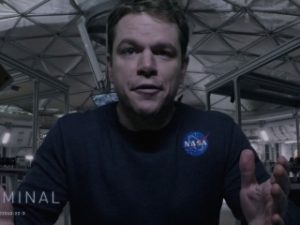Monthly Archives: November 2018
Filters
Films in the 1910’s: Editing
Films In The 1910’s: PowerPoint Script
Editing –
There was relatively little editing in the 1910’s. The furthest editing would go back in the 1910’s, was when a film consisted of more than one shot. Without the use of the technology we have today, they would achieve this by physical cutting up a film reel using scissors. The most notable use of this in this decade was in 1918, with Russian director Lev Kuleshov. He made the Kuleshov Effect, on which the face of an actor is shown, then the film cuts away to something else. In this case, a bowl of soup, a dead child, and a woman. Back when this was made, audiences gave the actor credit for his acting, but the audience didn’t know that the recording of the actor was taken 10 years prior. This proved that the effect worked.
Cameras –
The cameras back in the 1910’s wasn’t very advanced, technology wise. Cameras were stationary while taking a shot, because cameras were not portable yet. However, there was some advances in the technology of cameras. This was in the form of an iris, which is a device installed on the front of the camera, which can be opened or closed. When closed, kit isolated a shot, focusing in on a certain aspect of the shot, instead of giving a wide sot of the area.
Lighting –
The 1910’s is when the film industry began to understand lighting. Prior to 1910, and a little into the century, all films were shot outside, taking advantage of the natural light. However, as the century advanced, more and more films making companies moved indoors, utilizing the use of artificial light, as it gave the director more control over the film’s mood, and what each shot would look like.
Sound –
Back in 1910, there was no such thing as actors talking. The best there was, was when the film would cut away from the action and show some text on screen, which would be a character talking. However, there was music in films, such as Frankenstein (1910). These usually consisted of orchestral themes, which would help dictate the mood of the film. These Musical pieces would not be recorder but performed live for the audience while the films were shown.
Editing in Whiplash
Sound in Dunkirk
The Use Of Editing In Whiplash (Damien Chazelle)
The Use Of Sound In Dunkirk (Christopher Nolan)
Dunkirk Task
Sound is an important element in Christopher Nolan’s Dunkirk (2017), the term narrative device means conveying the story forwards or trying to tell us something important. An example of this is through the character of Mr. Dawson, the captain of one of the civilian ships requisitioned to help the stranded soldiers. Mr. Dawson recognizes the engines of the planes that fly over his ship. This use of diegetic sound helps convey messages about the character of Mr. Dawson that he has experience with military aircraft and it’s confirmed after the oil scene when he tells the pilot that his son was in the air force.
Another use of sound as a narrative device is in the Final Dog Fight scene, where the German dive bomber is about to drop a bomb on where Commander Bolton is standing. Hans Zimmer’s use of a shepherd tone, where an illusion is created that the sound constantly rises, creates a sense of tension in the non-diegetic sound, the score. The use of this makes us feel Commander Bolton’s sense of impending doom which never arrives because he is saved by the pilot. This helps build up the plot.
The use of sounds and musical score and soundtrack is often used to fill in on the minimal amount of dialogue in the film, sources vary on the actual amount but there are only around 2 pages of dialogue in the actual film, the minimalistic use of dialogue in the film reflects the mood and feeling of the soldiers feeling of helplessness. It almost reflects the silent era where you had to use more visual effects to tell the progress the narrative and Nolan has even admitted to this.
Cinematography in The Shining
Examples of Diegetic/Intra Diegetic/Extra Diegetic Gaze

This is an extra diegetic gaze, where the actor or actress talks or look directly at the camera, so it seems they are talking to the audience individually. It gives a connection between the film star and viewer and allows the viewer to sympathise with the character because the character is looking the viewer right in the eyes (camera lens).
